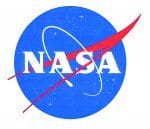NASA is all Set to Launch First Ever Mission to Study Neutron Stars
NASA is all set to launch the world’s first ever mission devoted for studying neutron stars. NASA will launch the Neutron Star Interior Composition Explorer, or NICER, aboard a Falcon 9 rocket.
The NICER will be installed aboard the International Space Station (ISS) as an external attached payload. About a week after its installation, the NICER will begin observing neutron stars. The mission will focus especially on Pulsars. During the mission, NASA will also carry out the world’s first demonstration of X-ray navigation in space.
Significance
Pulsars are those neutron stars that appear to wink on and off like a cosmic lighthouse. As these pulsars send pulsations that are predictable. They can be used as celestial clocks for providing high-precision timing similar to that of the atomic-clock signals supplied through the Global Positioning System (GPS). GPS signals, however, gets weakened if one travels beyond the orbit of the Earth. On the other hand, Pulsars remain accessible virtually everywhere in space making them an apt navigational solution for deep-space exploration. NICER will perform tests for the first time in a space technology that relies on pulsars as navigation beacons.
Pulsars and Neutron stars are nothing but the remnants of massive stars which exploded and collapsed into super-dense spheres after exhausting their nuclear fuel. Pulsars were discovered in 1967 by British astrophysicist Jocelyn Bell.
It is estimated that just one teaspoonful of neutron star matter would weigh a billion tonnes on Earth. There have been many models that attempt to describe the physics governing the interiors of neutron stars. The NICER mission will help in finally testing these theories with precise observations. Observation of neutron stars in the energetic X-ray band provides the greatest insights into their structure and the phenomenons like starquakes, thermonuclear explosions as well as of the most powerful magnetic fields known in the cosmos.
Month: Current Affairs - June, 2017


